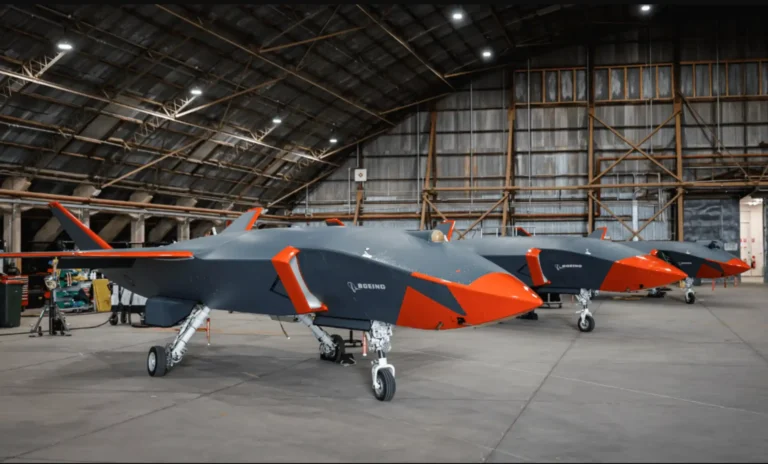Follow Us:

Share
On January 2, 2025, the U.S. State Department approved a massive arms sale to Japan worth an estimated $3.64 billion.
This transaction includes up to 1,200 AIM-120D-3 and AIM-120C-8 Advanced Medium-Range Air-to-Air Missiles (AMRAAM), alongside associated support services and equipment.
Announced by the Defense Security Cooperation Agency (DSCA), the deal is a testament to the ever-evolving defense partnership between the United States and Japan.
Against the backdrop of rising geopolitical tensions in the Indo-Pacific, particularly concerning China and North Korea, the approval is part of a broader strategy to fortify regional stability and bolster Japan’s military capabilities.
But beyond the numbers and specifications, this move opens the door to larger implications for U.S.-Japan relations and the balance of power in the region.
At the heart of the $3.64 billion package are two cutting-edge missile systems—the AIM-120D-3 and AIM-120C-8—both part of the highly regarded AMRAAM family. These missiles, renowned for their advanced capabilities, will significantly elevate Japan’s aerial defense systems.
The AIM-120D-3, in particular, boasts an extended range, improved targeting precision, and superior guidance systems. Such technological advancements are designed to address modern aerial threats, making these missiles a critical addition to Japan’s defense arsenal.

Beyond the missiles themselves, the package includes essential components such as guidance systems, propulsion units, warheads, and missile containers. Additionally, training and maintenance equipment will ensure seamless integration into Japan’s defense systems. This comprehensive approach not only equips Japan with advanced hardware but also ensures long-term operational effectiveness.
The approval follows the typical arms sale protocol, allowing Congress a 30-day review period to scrutinize the deal. However, given the robust military alliance between the U.S. and Japan, significant opposition to this transaction is highly unlikely.
The sale aligns with Japan’s ongoing efforts to modernize its military, a goal underscored by its plan to increase its defense spending to 2% of GDP by 2027.
The missiles’ deployment will provide an enhanced ability to counter regional threats while complementing the U.S. military presence in Japan, which has long served as a cornerstone of stability in the Indo-Pacific.
This arms deal cements the deep military partnership between the U.S. and Japan, reaffirming shared strategic priorities in a region rife with challenges. With China’s growing military assertiveness and North Korea’s persistent missile tests, the U.S. and Japan are aligned in countering these threats.
The sale of advanced AMRAAM missiles demonstrates Washington’s commitment to enhancing Tokyo’s defense capabilities, reinforcing a bilateral security framework that has ensured regional stability for decades.

Japan’s defense reforms add further significance to this deal. By integrating the AIM-120D-3—a state-of-the-art missile—Japan not only upgrades its defense arsenal but also signals its readiness to take on a more proactive role in regional security. This alignment of priorities underscores a mutual commitment to building a technologically advanced and responsive defense strategy.
The introduction of these missiles marks a substantial upgrade for Japan’s Air Self-Defense Force (JASDF). With extended range and precision targeting, the AIM-120D-3 and AIM-120C-8 enhance Japan’s ability to defend its airspace against diverse threats.

These missiles offer a critical edge in rapid-response scenarios and intercepting enemy aircraft or missiles, bolstering Japan’s readiness amid evolving military challenges.
While these systems provide significant benefits, they are not a standalone solution. Broader defense challenges, such as limited munitions stockpiles, aging military platforms, and the need to address hybrid threats, require a multifaceted approach.
Nevertheless, this sale represents a pivotal step in addressing these gaps and strengthening Japan’s position as a capable ally within the U.S.-led security framework.
Beyond operational enhancements, this deal carries substantial political significance. The U.S. approval signals unwavering support for Japan, sending a strong message to allies and adversaries alike.
Amid heightened Indo-Pacific tensions, the transaction underscores Washington’s commitment to regional stability and defending its allies. It reaffirms the U.S.-Japan alliance as a cornerstone of Indo-Pacific security, countering China’s growing influence.
For Japan, the deal highlights its shift toward a more assertive defense posture. Traditionally constrained by its pacifist constitution, Japan has been steadily modernizing its military capabilities to meet contemporary security demands.
Acquiring these advanced missiles underscores Tokyo’s intent to play a more active role in regional security, aligning with its growing defense budget and policy reforms. This convergence of U.S. support and Japan’s defense ambitions solidifies the alliance’s credibility and relevance.
Share
Defense Feeds is publication focusing on informing, engaging, and empowering the world by providing accurate information from defense technology.
Powered by Defense Feeds © 2025 – All rights reserved.